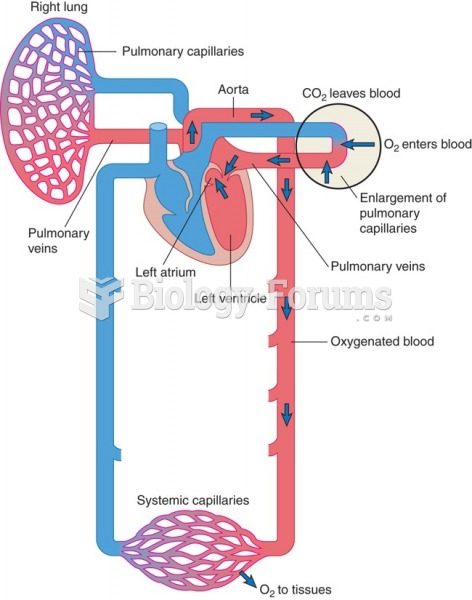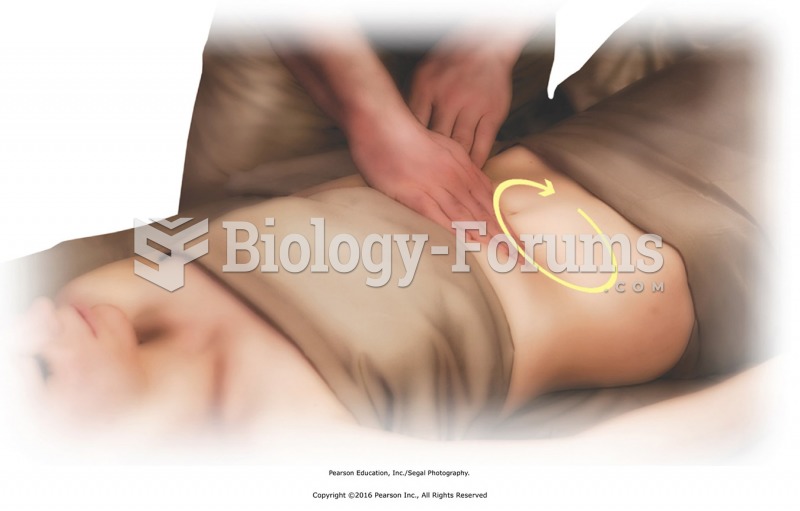|
|
|
Though Candida and Aspergillus species are the most common fungal pathogens causing invasive fungal disease in the immunocompromised, infections due to previously uncommon hyaline and dematiaceous filamentous fungi are occurring more often today. Rare fungal infections, once accurately diagnosed, may require surgical debridement, immunotherapy, and newer antifungals used singly or in combination with older antifungals, on a case-by-case basis.
Persons who overdose with cardiac glycosides have a better chance of overall survival if they can survive the first 24 hours after the overdose.
In most climates, 8 to 10 glasses of water per day is recommended for adults. The best indicator for adequate fluid intake is frequent, clear urination.
Drying your hands with a paper towel will reduce the bacterial count on your hands by 45–60%.
There used to be a metric calendar, as well as metric clocks. The metric calendar, or "French Republican Calendar" divided the year into 12 months, but each month was divided into three 10-day weeks. Each day had 10 decimal hours. Each hour had 100 decimal minutes. Due to lack of popularity, the metric clocks and calendars were ended in 1795, three years after they had been first marketed.
 The fuel tank pressure sensor (black unit with three wires) looks like a MAP sensor and is usually ...
The fuel tank pressure sensor (black unit with three wires) looks like a MAP sensor and is usually ...
 Return of oxygenated blood to the heart and entry into the aorta (red = oxygenated blood, blue = ...
Return of oxygenated blood to the heart and entry into the aorta (red = oxygenated blood, blue = ...





